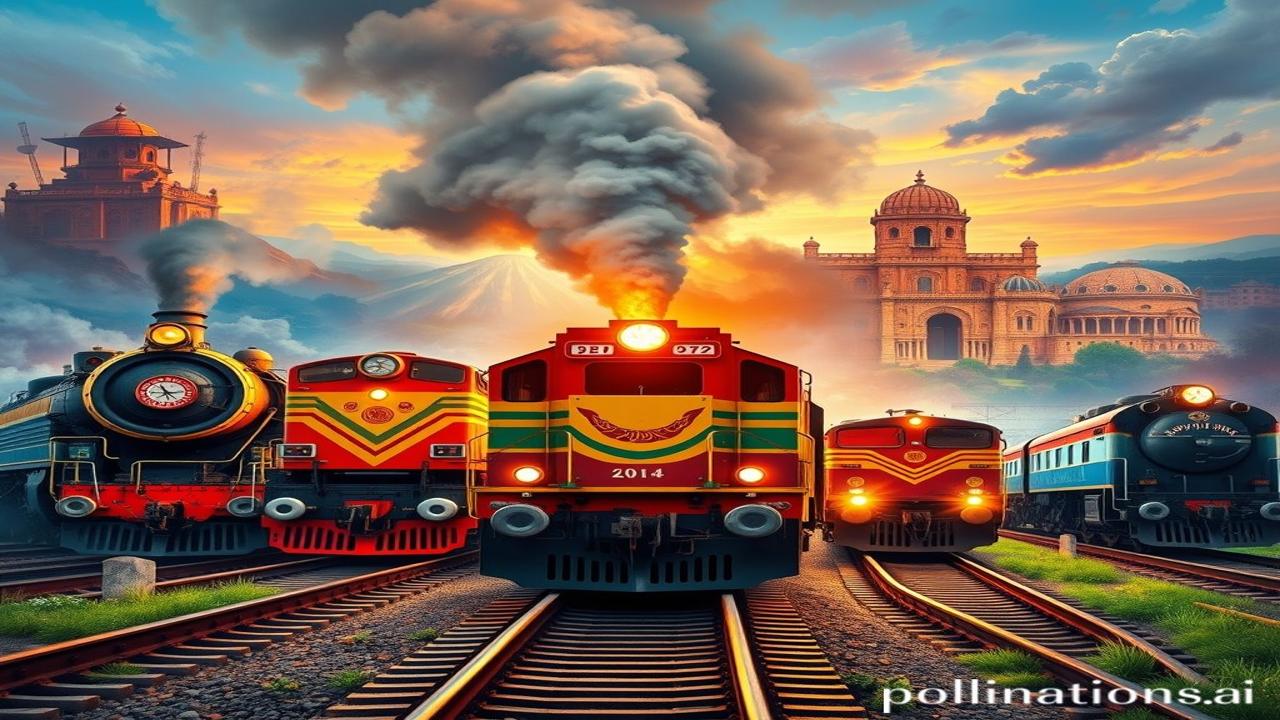रेलगाड़ी: Waqt Ke Pahiye Par Hindustan Ka Safar
Kabhi Station ke platform pe khade hoke, door se aati hui railgaadi ki awaaz suni hai? Woh awaaz sirf metal ke takraane ki nahi hoti. Woh awaaz hoti hai ek daastaan ki, Hindustan ke badalte hue chehre ki, sapno ki, aur ummeedo ki jo patriyon par daudti hai. Railways, sirf transport nahi hai, yeh toh hamaari dhadkano ka ek hissa hai.
Bharat Mein Railways: Ek Historical Glimpse
Railways in India started way back in 1853, when the first train chugged from Bori Bunder (Mumbai) to Thane. Think about it, uss zamane mein ghode-gaadi aur paalki hi toh the travel ke liye. Phir achanak, ek lohe ka daanav aaya aur sab badal gaya. But it wasn’t just a British invention that took root here. The Indian Railways became intrinsically linked to India’s own story.
Yeh sirf train nahi, yeh ek revolution tha. Imagine, suddenly log ek jagah se doosri jagah jaa sakte the, samaan bech sakte the, khabrein phaila sakte the. Railways ne business ko boost kiya, cities ko connect kiya, aur Hindustan ko ek naya perspective diya. Lesser known fact: Indian Railways originally used steam engines built in Britain, but gradually, local manufacturing began, symbolizing India’s growing industrial capacity.
The Role of British Raj and Beyond
British Raj mein railways banne ka reason sirf Indian logo ka convenience nahi tha. They wanted to transport raw materials from India to their factories, and finished goods back. But whatever the intentions, Railways became a catalyst for change. After Independence, railways became a symbol of national integration and progress.
ज़मीनी सच – People and the Lifeline
Imagine a typical scene in the 1950s:
” अरे रामू, जल्दी कर! गाड़ी छूट जाएगी!” (Hey Ramu, hurry up! The train will leave!) shouts a farmer, rushing with his sacks of produce to catch the train to the city market. He’s wearing a simple dhoti and kurta, his face etched with hope for a better price for his goods.
Inside the train, you’d see a mix of people – students heading to college, merchants traveling for business, families going back home to their villages. The smell of chai and pakoras filled the air, along with the chatter of conversations in various languages. Every journey was a new story. Every station, a new world.
“बिटिया, स्टेशन आ गया, अपना सामान संभालो।” (Daughter, the station has arrived, take care of your belongings) an old woman says to a young student, packing her books. These small interactions painted the very fabric of India’s collective experience.
धरोहर और पहचान – Indian Railways Today
Today, Indian Railways is one of the largest railway networks in the world. It’s still a crucial part of our lives, connecting remote villages to bustling cities. We see its presence in our daily commutes, our long journeys, and even in Bollywood movies where the train station often becomes the meeting place of lovers! The railways are woven into our cultural fabric. Even the sound of the train whistle is instantly recognizable, a symbol of “Bharatiyata” or Indianness. Even now the train is important part of our life.
मजेदार तथ्य या भ्रम-भंजक – Did You Know?
Log samajhte hain ki all Indian Railway lines are broad gauge. Lekin asli sach yeh hai ki there are still some narrow gauge lines in operation, offering a glimpse into the past! Also, did you know that the Indian Railways even runs a hospital on wheels, called the “Lifeline Express,” providing medical care to remote areas?
दृश्य और भावनाएं – A Sensory Journey
Imagine standing on a platform in Rajasthan. The air is hot and dusty, carrying the scent of spices and freshly brewed tea. The walls of the station are painted with colorful murals depicting local folklore. The rhythmic clatter of the train approaching grows louder, and the ground vibrates beneath your feet. You can feel the energy, the anticipation, the sheer scale of this network that connects millions.
अंतिम विचार या उद्धरण – A Thought to Take Away
“रेल की पटरी की तरह, ज़िंदगी भी आगे बढ़ती रहती है – कभी सीधी, कभी घुमावदार, पर हमेशा मंज़िल की ओर।”
(Like the railway track, life also moves forward – sometimes straight, sometimes winding, but always towards the destination.)
